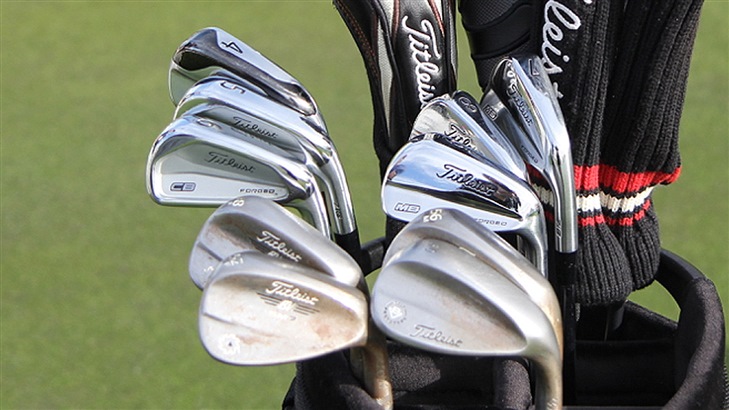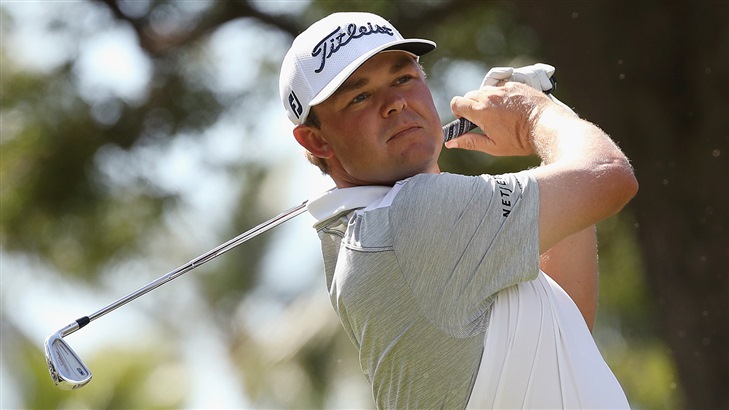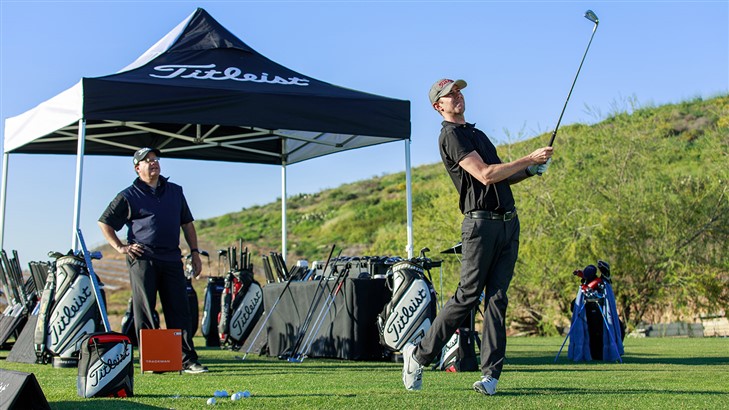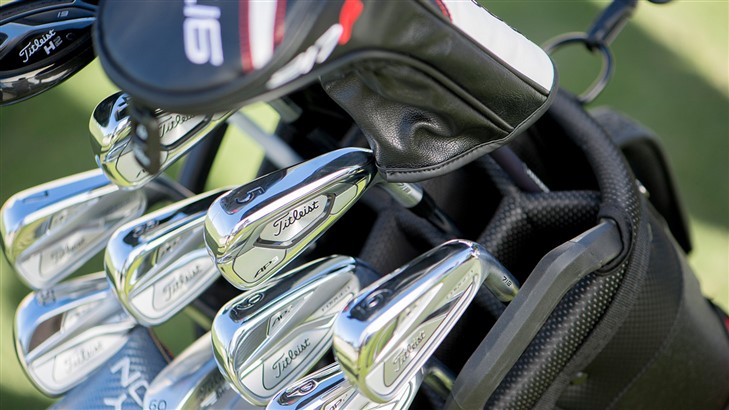
Anytime we talk about golf equipment at Titleist, you'll also hear us talk about the importance of fitting. In our philosophy, the two are inseparable. In order to optimize performance, the tools of the game must be properly fit to the individual player.
The level of customization in player setups has advanced to the point where we're now seeing an interesting new trend in fitting - blended sets of irons.
In fact, as Titleist Tour Representative J.J. Van Wezenbeeck told us, 75% of today's players on the PGA TOUR are being fit into blended sets of irons.
"It all started with the need to create better gapping between clubs," J.J. told us. "Players were getting bigger and stronger, and hitting their drivers and fairway metals farther. At the same time, their scoring iron and wedge distances were staying relatively the same, so the gap between the metals and the irons was widening."

One player who has seen the benefits of playing a faster, more forgiving long iron is Titleist Brand Ambassador Patton Kizzire, who had a 718 T-MB 4-iron in the bag when he captured his first two PGA TOUR victories, at this year's OHL Classic at Mayakoba and the Sony Open in Hawaii.
From his 718 T-MB 4-iron, Kizzire transitions to 718 CBs in his 5- and 6-iron. The CB launches the ball on a more penetrating trajectory that Patton can control with precision, while 718 MB 7, 8 and 9 irons have a traditional blade appearance, feel and workability for his scoring irons.
"Multiple options in the 718 line really helps,” J.J. said. “You need different things from your long irons, mid-irons and scoring irons, so it makes sense to consider all the tools in the toolbox. Patton really favored the look of traditional irons so 718 MB fit the bill for his short irons. But by blending into different head types, we were able to improve his gapping and ball flight as he progresses into the longer clubs."
*Editor's Note: Patton has relied on his blended set of 718 irons throughout the 2018 season, capping the year off by teaming up with his good friend, Brian Harman to win the QBE Shootout.
• • •

NOT JUST FOR TOUR PLAYERS
We wanted to know if the blended set trend is something that amateur golfers should also consider, so we visited our fitting experts at the Titleist Performance Institute.
"We have been blending sets of irons, at least recommending them to amateurs for years," Glenn Mahler, fitting supervisor at the Titleist Performance Institute said. "Most players can improve their scoring ability in the mid and long irons. Something we'll often see is the gap decreases toward the top end of the iron set.
"For example, a player will come to us and share that their 5-iron goes the same distance as their 4-iron. For playable gaps, you ideally want 8-16 yards of difference between these clubs, but when we start tracking their shots on the launch monitor, they may in fact only have a 2-3 yard gap."
But shouldn't a lower lofted iron automatically go further?
"Regardless of loft, if you have two clubs that launch the golf ball at the same speed, they will generally carry approximately the same distance,” Lucas Bro, Senior Club Fitting Analyst told us. “This is why we fit to speed, not to loft. In the irons, we like to see a 5-7 mph difference between each club. This will equate to the 8-16 yard gap between clubs. When we see that speed drop off, we know we need to look at different head designs."
Holding greens on approach shots is just as important to amateur players as it is to TOUR pros, and Glenn added that angle of descent is another key data point that we look at in Titleist iron fitting.
"As we reduce the loft of the club, we want to maintain the same landing angle that we achieve with the 7-iron. If the landing angle is 45 degrees in a 7-iron, we try to maintain this in the player's 6-, 5- and 4-iron. In a perfect world, we want the same stopping ability into a green with a 5-iron as a 7-iron. Blending to a larger chassis helps us to increase speed and optimize landing angles."
• • •

A MULTITUDE OF OPTIONS
So what kinds of blending options are fitters recommending? J.J. told us that the most common blended set on TOUR is 718 CB and 718 MB, but he added that each week they are seeing more T-MB and new AP3 long irons working their way into players' bags.
We’re seeing a wide variety of blended set configurations at the Titleist Performance Institute, as well as at Titleist fitting events throughout the country. Some popular mixes include:
- 718 AP2 5-PW & 718 T-MB or 718 AP3 4-iron
- 718 AP1 6-PW & 818H1 27°/23°
- 718 MB/CB 5-PW & 718 T-MB 3 & 4 irons
But, the only way to find the best blend for your game is to get properly fit by a certified Titleist club fitter.
As Glenn explained, "You need an expert club fitter with a launch monitor to capture accurate ball flight data, so that you can know for certain where in your bag a switch in head design could help. You also need to test all the different head types and see the differences in ball flight for yourself. We're constantly surprised by the different combinations of clubs that work for people."
• • •
Thanks to J.J., Glenn and Lucas for sharing their expertise!
Check out our Titleist Golf Club Fitting section to learn more about our fitting philosophy and to find a fitting event near you.
Have you seen the benefits of a blended set of 718 irons? Share your insights with us on the Team Titleist Clubs Forum.
#TeamTitleist
*Editor's Note: This article was first published on April 27, 2018.